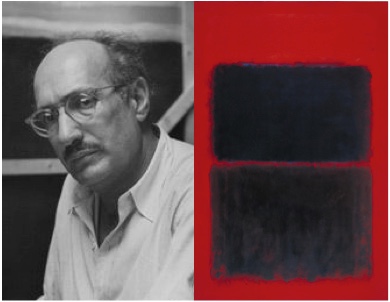Physicist: Although not common, completely new, novel colors are found from time to time.
There’s a vast conspiracy of optometrists and ophthalmologists who will try to convince you that our three types of cone cells somehow limit our vision, in a way that creatures with a wider variety of cones cells are less limited. But of course: color is color and you see it or you don’t. There are plenty of colors beyond the hegemonic “standard rainbow” and we don’t see them for exactly the same reason we don’t see unicorns or bigfeet: they’re very rare and never where you’d expect.
This story is nothing new. For example, regular old blue is a difficult color to isolate. If it weren’t for the sky, we’d barely ever see it in nature. And because “rare” = “expensive” = “classy”, we have “royal blue” (since royals love to be classy). Once upon a time, seeing something vibrantly blue would have really caught your attention: instantly recognizable, yet wholly alien. Seeing one of the many colors beyond the standard rainbow is a similar experience.
Sometimes a new color can be found just by looking somewhere no one else has bothered to look. For example, in 1768 Jeanne Baret, during her circumnavigation of the Earth in disguise, discovered three new colors, “och”, “ocher”, and “ochest”, only one of which is still in common use today. The first and last of these are totally distinct from any other color or combination of colors, but such were the chromatic strictures at the time, that they were shoehorned into the now defunct “och scale” (hence the names).
New colors are often found by painters who, obsessed with extending their craft, may stumble upon new materials, colors, and palates previously unseen on Earth. Desperate to keep the momentum after gaining fame for his signature style, “plusieurs visages sur la même tête“, Picasso invented a never before seen shade of cherry-blue. With his usual flare for nomenclature, Picasso named his discovery “Color on a Painter’s Palette”, though it rapidly became known as “naughtblue” in the artist community (to avoid any confusion with his earlier work).

Picasso dancing for joy in front of his first (and last) naughtblue painting. He considered this discovery to be his greatest accomplishment and was thrilled to have it photographed for posterity.
His stunning naughtblue work, “Woman Standing Around”, is now in a private collection and so lost to the world forever.
Rothko was a painter more interested in color than you are in anything. After a rough night in 1942, book-ended by a fifth of absinthe and Nietzsche’s “Ecce Homo” (the ordering of which is now hotly debated), Rothko “regained cognizance” to find that he had created violet’s precise and indisputable chromatic opposite, “outdigo”. Tragically, outdigo paint famously changes color when it dries, so he was unable to create with it. Indeed, he kept his only supply sealed in an unmarked can until it was accidentally sold at a lawn sale to pay for cooking lessons.

Rothko (left) through his study of hue invented “outdigo”, the obvious-in-hindsight opposite of violet. After misplacing his only can of outdigo paint, he pretty much gave up (right).
Little is known of outdigo, beyond Rothko’s few scribbled notes:
“It has come to me, outdigo. It shall be an heirloom of my studio. All those who follow in my bloodline shall be bound to its fate, for I shall risk no hurt to the color. It is precious to me, though I buy it with a great pain. The markings upon the canvas begin to fade. The color, which at first was as clear as red flame, has all but disappeared – a secret now that only turpentine can tell.”
So there are plenty of new colors, it’s just a matter of persistence, luck, and looking at stuff that no one else has ever bothered to look at.








Awesome! HAFD to you as well 🙂
These questions are always weird to me. We cannot discover new colors. We can just find new names for colors. Human eyes see in a finite portion of the EM Spectrum. What out brains define as color is simply a very specific part of that spectrum. The only way we could define new “colors” is if human vision extended beyond it’s current range…into the infrared (which our brains would probably just interpret as a kind of red) or into Ultraviolet (which our brains would probably interpret as a kind of blue).
So the short answer is no. Human eyes already see everything possible in the visible spectrum. Even tetrachromats do not see new colors…they just see more gradients of existing colors.
The only exception might be combinations of colors that don’t exist in nature. There was a post about that some time back. Seeing a combination of red and green for example (which can’t exist in nature). Someone posted a way you could trick your brain into seeing it. I tried it and it does work…the “color” looks like a combination of red and green that is impossible to describe to someone that hasn’t seen it. But it’s not a real color. It’s just a way to trick your brain into seeing both colors in the same place at the same time.
Yes and it will happen however not for a very long time. One day mankind either robotically and or in a crewed ship will visit a planet around another star. Depending on that stars color and the conditions of the planet’s atmosphere we are libel to find many rainbows of new colors impossible here because of our sun Earth relationship. I can’t waite to see it all.
On a more serious note, there actually are people with four types of cone cells in the retina (tetrachromacy.) They can be shown to have more color sensitivity, but of course to actually know what their subjective visual experience of color is is probably not possible. (Even if you were telepathic, how would you ground-truth it?)
https://theneurosphere.com/2015/12/17/the-mystery-of-tetrachromacy-if-12-of-women-have-four-cone-types-in-their-eyes-why-do-so-few-of-them-actually-see-more-colours/
Ernie Kent – Tetrachromats don’t see more colors. They just seem more gradients of existing colors. They see all the same colors we see, they just see them in higher detail.
@Jeff – I believe you are making a category error. You are correct in that they are apparently not responsive to wavelengths outside the range of sensitivity of trichromats, but as for the subjective color experience that the extra cone type provides, there is simply no way of telling if their experience is or is not of colors that trichromats see. Objects in the external world do not possess “color” in the sense of your subjective experience of “red,” say. Rather they possess the physical property of differentially reflecting more long wavelengths. The subjective experience “red” is a property of your experience in response to those wavelengths that is not open to observation by anyone else. For that matter there is no way to tell if two normal trichromats see the same color when presented with the same stimulus, but in the case of tetrachromats we perhaps have a bit more reason to wonder if they might not see subjective color experience differently.
Ernie Kent – I would argue that it ultimately makes no difference, because you could make the same argument for anyone…do you see blue the way I see it? If not, does that mean I discovered a new color?
All we can tell objectively is whether or not you can see the same wavelengths of light that I can. We can tell whether or not someone can detect what we objectively define as a color. You might not see blue the same way I do, but there is obviously a commonality…if I point to a blue square on a page, you will be able to tell it is blue, regardless of how your brain processes that wavelength of light. When we look at a rainbow, we will both see all the colors in the same order.
And that was my point regarding tetrachromats…they are not seeing any new wavelengths. They are not seeing anything outside the normal human visual spectrum. They are seeing the same range we are. They just see more detail within that range.
@Jeff – I think we are in agreement that the same set of wavelengths are being sensed, and only disagree about whether or not it’s important to make the distinction between color as a subjective experience and color as a property of physical objects. Obviously to avoid confusion we ought to use two different words, and it’s only historical scientific naivete that has given us a language with the same word, “color,” for two qualitatively different things. I would argue though that while private, subjective experience is beyond the reach of (current) scientific method, it is not at all unimportant and we should make every effort to keep the distinction clear. My reason for saying this is that obviously subjective experience exists (at least mine does) and as such it represents a huge part of ontology which is ignored exactly because it is currently beyond the reach of science. One can even argue that it’s primary and that “objective” reality is at best an inference from it. If the goal is to understand reality we can’t just sweep subjective experience under the rug because we haven’t figured out how to deal with it. Actually, I think getting a handle on an ontology of a full reality that includes both subjective and objective phenomena is the biggest and most fundamental problem going.
Viagra can make a person see blue. Not the baby blue of the capsule. But a brand new blue. A very deep, rich, shimmering violet blue that makes the atmosphere and objects within it seem to virtually glow electrically, greatly adding excitement to the ambiance. Almost to the point of distraction were it not for the other effect. Or so I’ve been told.
This surreal blue is a color that one might strive to recreate on just a few Easter Eggs (about this time of year for certain religious sects) that everyone might see on the same day for instance… not too many eggs as it would render the striking new blue color too common. I think the directions even say that if the color lasts more than 4 hours, one should call an ophthalmologist.
One other effect; after much begging, ‘my friend’ relented and finally gave a pill to an acquaintance for an important scientific experiment with his spouse. The next day the abusive acquaintance berated him for endangering him with drugs. He’d read (on the net) that one can go blind from Viagra, blindness being the absence of color actually. ‘My friend’ assured him that only one somewhat related thing can really make a person go blind, and he was perfectly safe because he had a spouse. Anyway, he was apparently willing to risk blindness; he didn’t give the pill back.
Wes
…
An interesting question which point to the subjectivity of color. There are a number of colors that the brain just flat makes up. We know this because while almost all colors are associated with a discrete wavelength of light, some colors do not have a discrete wavelength but are approximations of half this half that. Pink and purple are two imaginary colors.
Then there is the curious case of yellow which does have a discrete wavelength. Yellow appears as primary color, but it isn’t. Pure yellow is a combination of half red and half green. Do you see hints of red in yellow? How about green?
It is such an aberration from all other colors it makes you wonder why? Was there some evolutionary reason for this, some survival benefit? Maybe there was this bad ass predator, a yellow predator, that just feasted on humans who saw a half red and half green eating machine far too late to run and hide. But then somebody had a color defect that produced this bizarre color for yellow which was discernible at much greater distances.
New yellow guy comforted all the widows whose hunter husbands were lunch for the yellow man eating monster. It took a while but eventually we all came equipped with bizarre new yellow which is useful to this day by making those golden arches of McDonalds stand out in the background.
Yellow is created with makes no sense. Yellow is one such color, which we perceive as a primary color, like red, green and blue. But yellow is created from half red and half green. It’s a very bizarre color in that you don’t see hints of red or green or any other color. Yellow is just yellow.
Well, duh. Look at the apple on the tree, day after day. It starts green, then it gets yellow, then it finally gets red =) There is a time when you can catch “shades of green” in its yellow, and then later “shades of red” in the same apple =) Perhaps our ancestors did not need to fear yellow crocodiles more (or differently) than green ones, but rather needed to know if apple was already sweet to eat? =)
Love the Lord of the Rings reference at the very end of the article!
Perhaps future evolutionary changes in human eyes will allow us to see broader areas of the light spectrum, in which case the brain will interpret this new information as a new colour.
Pigment discovered at Oregon State University
https://today.oregonstate.edu/archives/2017/may/pigment-discovered-oregon-state-university-inspires-new-crayola-crayon-color
I found a new color I called it inferno penis challenge
Wood-psudo-color discovered and pale shadow discovered.?
Red planets mysterious findings!| Nasa’s Unexplained Files| Full discoverychannelined 93k views 5d ago? Lanikadia is jeeperscreepers and manwitch? Just now 20:23 min in video? 9/11 sep.
I just read something recently saying that all colors are basically the same color vibrating at different frequencies
Red has a certain vibrational frequency ,yellow has its own certain vibrational frequency and so forth and so on
If this is correct then we are talking about only one color with probably an infinite amount of vibrations which have yet to be discovered thru science, art, creating new colors , computers maybe sending or visiting other planets , etc and of course having the necessary eye cones to se and interpret them
It truly is mind boggling